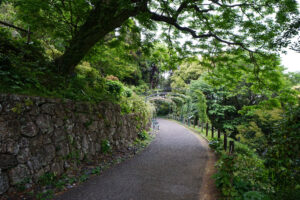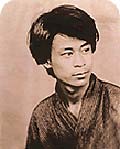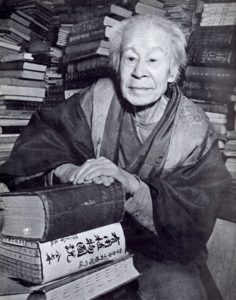Japan celebrates “Botany Day” annually on April 24. The celebration recognizes the life and career of Tomitaro Makino, the Father of Japanese Botany, on his birthday.

Tomitaro Makino was born on April 24, 1862, son of a wealthy brewer of the Japanese national drink, sake (died 1957). His family met with tragedy, however, as both his father and mother died by the time he was five years old. He was raised by his grandmother, who considered him a frail child.
Makino, however, must not have been frail. He attended primary school, but his real interest was plants. He spent his spare time roaming the countryside of his native Kochi Prefecture, hiking continuously, climbing mountains and collecting plants. His extensive collecting revealed the high plant biodiversity of an ecosystem he loved, Mt. Yokogura. Over the course of his life, he collected more than 400,000 specimens (now held in his herbarium at the University of Tokyo).

Formal schooling was not for Makino, and he left at an early age to pursue botany independently. He visited Tokyo when he was 19, meeting Japan’s leading botanists. Tokyo, he decided was where he could learn the best, so he moved there in 1884. He was granted access to the University of Tokyo’s herbarium and allowed to attend classes even though he was not a registered student. He became a gifted illustrator of plants, using traditional Japanese brush and ink techniques
His affiliation with the University of Tokyo continued without interruption for nearly fifty years. He founded The Botanical Magazine (Tokyo) in 1887, regularly publishing his own articles and botanical illustrations. He was employed by the university starting in 1891, working for 47 years until retiring in 1939. He founded the scholarly Journal of Japanese Botany in 1916 and served as its editor for the next two decades. The university awarded him a doctorate in 1927, based on his acknowledged reputation, although he never sought such credentials and refused to use such titles.
Both his spirit and his work ethic were heroic. He described 1500 new plant species, including wild species but also cultivated vegetables and ornamental plants. In 1938, he published “The Illustrated Flora of Japan,” which contained 3235 illustrations, all drawn by Makino himself. It remains a standard work to this day. After retiring from the university, he devoted himself to educating the general public, both through popular presentations and magazine articles.

He well deserves his recognition as the Father of Japanese Botany. He was made an Honorary Citizen of Tokyo and awarded the Japanese Order of Culture. The botanical garden in his home of Kochi has been renamed in his honor. At his death in 1957, at the age of 95, a memorial to him noted,
“When talking of plants he was fascinating, and when writing of them his prose was charming and witty. It is no wonder that all who came in contact with him loved him. By his efforts and his influence he advanced the standard of plant taxonomy in Japan to its present high levels, and this remains as a memorial of his great achievement as a botanist”
References:
Hisauchi, Kiyokata et al. 1957. Rectificiation: Tomitaro Makino 1862-1957. Taxon 6(5):125-127. Available at: http://www.jstor.org.prox.lib.ncsu.edu/stable/pdf/1216089.pdf?refreqid=excelsior:cfc9b5186f8cfb6bc44dee8ce3bb3f26. Accessed April 21, 2018.
Makino Botanical Garden. An Overview. Available at: http://www.makino.or.jp/index_e.html. Accessed April 21, 2018.
Makino Memorial Garden & Museum. About Tomitaro Makino. Available at: http://www.makinoteien.jp/03-makino/e.html. Accessed April 21, 2018.
